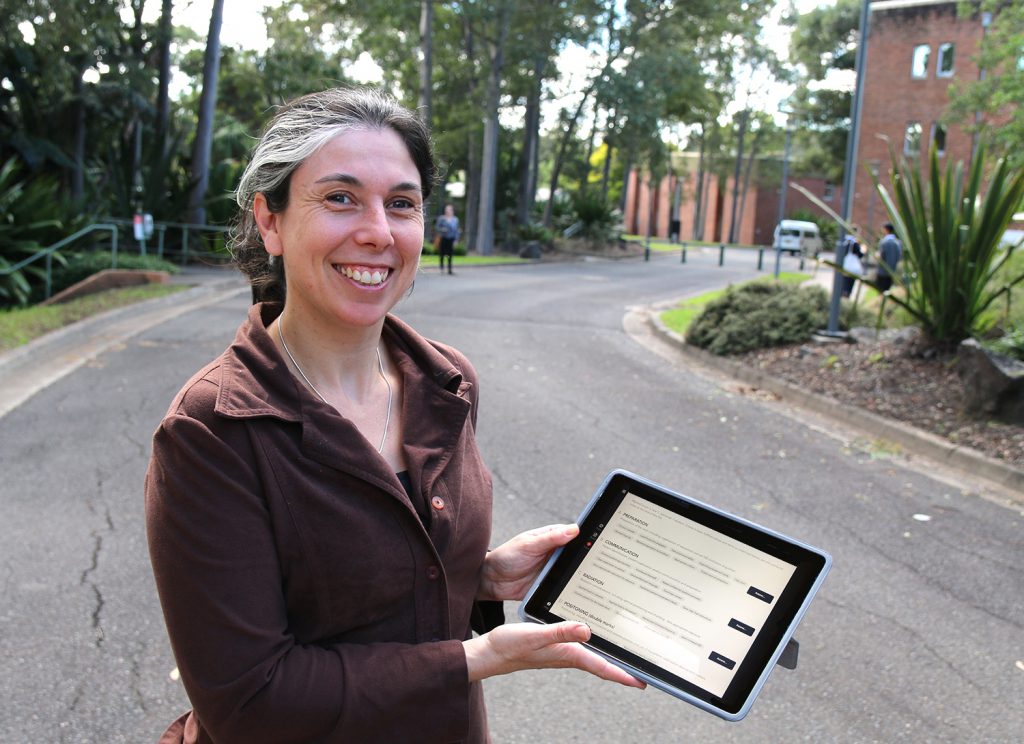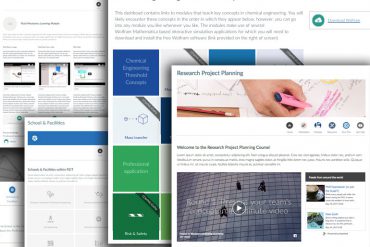The first classroom that most of us step into as tertiary educators is usually a small, rather than a large one. Small class teaching is highly variable, from music performance through to computer labs. Whether it’s a tutorial, a laboratory, a workshop, or a seminar, small classrooms are a perennial and vital part of the university’s teaching ecology and students’ learning experience. They’re often seen as primarily a space to learn skills and check content knowledge, but also serve as a chance for students to form relationships with each other and with us, their teachers.
Small class teaching offers us the opportunity for human connection and belonging. The format in which this occurs will vary, from its aims and purpose through to the pragmatics of class duration and number of students. Tutorials can range from responsive study and feedback sessions through to tightly structured activity-based classes. Unless your unit of study is entirely comprised of small classes, they also have to ‘talk’ to other components such as online materials or large lectures. When we think of it like this, small classes might be the most valuable tool universities have in supporting learning.
Whether you have (or are allocated) five minutes or five hours, this article shares some practical tips for how you can prepare for your small class teaching. As an educator we hope you find something.
Preparing for the semester
A few simple steps taken before semester even begins will set you up for a successful 13 weeks. It can always be a bit nerve-wracking stepping into a classroom for the first time each semester, so these tips have been written with the aim of minimising that and ensuring you can exert all your focus on teaching and getting to know your students.
Attend the start of semester teaching team meeting
If you haven’t worked with them before you will have likely met your unit coordinator before the semester even begins, for a quick catch-up or interview for the role. It’s also quite common to have a whole-teaching-team meeting scheduled before teaching starts. This is a chance for you to meet any other teachers in the unit, and understand the expectations of you all throughout the semester. Try to read through the unit outline before this meeting, and come with any questions you might have about assessments, marking periods, class preparation, etc. Some unit coordinators may provide a step-by-step tutorial outline each week, and some may want you to design your own classes – make sure you know exactly what you’ll need to do each week. As you’ll also be meeting the other teachers in the unit, you may also wish to…
Find a mentor or peer observation partner
If this is your first semester teaching, try to pair up with a more experienced teacher in the unit and organise to attend and observe some of their classes. Each teacher has their own style, so see this as a chance to learn about alternative ways of teaching rather than to self-critique your own. You may also want to ask them to come along to observe a class of yours and give feedback. Reciprocal peer observation is something we strongly recommend for teaching development once you have a few semesters under your belt, and with time you may even want to sign up for a formal observation of teaching for feedback from experienced and trained peers across the University. Likewise, if you have a lot of experience teaching in a subject, try to share your knowledge with those who are new to the role while taking the opportunity to learn how another person approaches this work.
Schedule out your semester
If you do attend a teaching team meeting or catch up with your unit coordinator, sit down with your calendar for a few minutes afterwards to plan out your semester. Add in your weekly classes and importantly, also, the marking periods where you’ll may be doing additional hours each week. In most units teachers will aim to return assessment grades and feedback to students within two weeks of submission, though sometimes markers may have more or less time. If you’re also a postgraduate student, consider making sure you also have time set aside for study and research. Studying and teaching at the same time is hard and both teaching and research are mentally challenging, so try and schedule blocks of time to study, research and rest.
Visit your teaching space
You should be able to find out about your physical teaching space either from your unit coordinator or the online timetable (if you are teaching in an even year, e.g. 2024, change the ‘odd’ in the URL to ‘even’). If you’re on campus before formal teaching starts, find some time to visit the space and get a feel for it – where will you place yourself, and how will you ask your students to arrange themselves? This will also give you a chance to see and test out the technology in the room and report any issues you might find. If you can’t make it onto campus, you can also find out information about your room online.
Find out a bit about your students
The ‘Knowing your Students’ (KYS) report is a valuable tool for gaining a snapshot of the students enrolled in your unit of study. While it only gives anonymised information about an entire cohort, it can be valuable to know the most common degrees and other units students are enrolled in. The report will also give you information about things like students’ places of birth or origin, the language they speak at home, and about their prior educational experience. Knowing these things, in addition to what you learn about your students in class, will support you in becoming a culturally responsive teacher and making sure everyone feels welcomed at Sydney.
Say ‘hi’ to your students
Think about how you’ll communicate with your students throughout the semester. There are two main ways to gather students in each class en masse. If your unit coordinator has enabled the link between timetabling and Canvas students will automatically be added and removed from automatically-created sections until timetables stabilise in Week 3. If they haven’t done this, you can manually create groups in Canvas based on the class lists you are provided with. Note that if you follow that last article, your ‘Group Set’ should be called something like ‘Tutorials’ and then your ‘Groups’ named something like ‘Alix 10am Tuesday’ and ‘Sam 4pm Thursday’.
Whether your students are in groups or sections, you can message them using the Canvas inbox. Students in sections can also be messaged using Canvas announcements (just make sure you select the right section). If you have groups set up, you can create announcements from group homepages and even discussions just for that group.
I (Alix) love using groups – they’re like mini Canvas sites just for the students in a particular class, and I actually use them to upload tutorial outlines and instructions, including links to Padlets or Google Docs I set up, every week.
Unit coordinators might also want to think about using the Student Relationship Engagement System, or SRES, to personalise your communications with students. Come along to an upcoming workshop to learn more.
Whichever way of contact your students you choose to go with, get in touch early to say ‘hi’ and introduce yourself, and set expectations for how you’ll get in touch with them throughout the semester. You might wish to email individual students directly when necessary, and get in touch with them all two days before each class using Canvas announcements to advise of the preparation they’ll need to do.
Preparing for a class
While every week’s class will be different at least in terms of the content you’ll be working through with students, there are a few simple steps you can work through each time to prepare. We do recommend one particular special step for the first class of the semester – preparing an ‘icebreaker’ exercise so your students can get to know each other and feel more comfortable for the collaborative and groupwork to come. The Transition Resources Site (enrol here first) recommends a few icebreaker activities that work well for first-year classes, but there are lots of options out there that can work well. Just make sure it’s something everyone can participate in, and that you have your students work in small comfortable groups to start.
Write a lesson plan
Some units may provide all tutors with lesson plans, which can be useful in structured activity-focused classes. If not, think about writing your own including a few key elements. Start with learning goals for the session, which may or may not be set by a unit coordinator. Aim for around three learning goals per class, connected to the unit’s current content or skills focus. These goals could refer to different ways of looking at content (i.e. embed an understanding of three different perspectives or frameworks), or progress in terms of difficulty (i.e. first understand a skill, perform it under supervision, then perform it independently). Ensure each goal is measurable and/or observable, and communicate them with your students at the beginning and end of each class. This will help students connect your class to their overall learning, and to track their progress. After you write the session’s goals, plan your activities in relation to them. For a one hour class try to aim for two or three activities, perhaps discussions, reflections, worksheets, or another sort. Finally, think through how long each activity will take and add timings to your plan so you can make sure to get through everything.
All this being said, sometimes things don’t go exactly to plan! You might find that your students sometimes haven’t done the required preparation for the activities to go well – prepare a brief summary of the lecture, skill, or reading content just in case. Alix once peer observed a class in which half of the students readily admitted having not done the two required readings; The tutor improvised by asking the unprepared students to spend the first half of the class reading through the second reading, so everyone could come together for at least one discussion in that second block of time.
Design for diversity
For all activities in your teaching, it’s important to think about how all students will have the chance to engage. Sometimes it’s obvious which students may have more trouble with their studies, but sometimes it’s less obvious. Use the information you found in reading through the knowing your students report mentioned above. Look through this report and think about other ways in which diversity is present in your classroom, and think about how you can ensure all students are given an equal opportunity to engage with their studies.
To design activities for diversity in your context, consider:
- How the activity will engage all of your students.
- How you will present this activity so that all students understand what to do.
- The options you could include to ensure all of your students can participate.
Communicate preparation expectations to your students
Using the communications expectations you’ve already set with them, let your students know what you need them to do to prepare for class. Pre-work might be outlined on Canvas, and in this case you could send them a link to the relevant page, but the message is always going to be understood more strongly if delivered directly by you. You could also take this opportunity to draw out connections between the class content and lectures or assessments, in case any students are thinking about skipping class in the upcoming week!
Reflect and reset
After a class, or the week’s teaching, take a moment to reflect and write out some notes about what went particularly well, and what you might want to change for next time. You could note down anything relevant you learned about students and their needs, perhaps a question they asked that you mean to research, groups to keep an eye on for an upcoming assessment, or a student with something tough going on who may need some extra support. These notes can also be helpful for preparing for awards or job applications in the future, and absolutely invaluable if you return to teach the same unit again.
Tell me more
- Join the next live session of M09 Engaging students in small classes in the Modular Professional Learning Framework.
- Read other Teaching@Sydney articles about small class teaching.
- Read through our guide to inclusive teaching.
- Ask your unit coordinator about tutor training that your Faculty or School may run.





